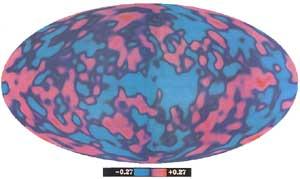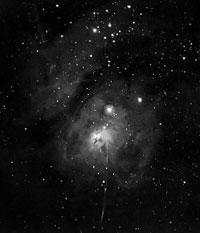Universe and liquid crystal
1994/06/01 Elhuyar Zientzia Iturria: Elhuyar aldizkaria

In the creation of the Universe, after a fraction of a second after the central explosion called Big Bang, the embryo of the Universe was homogeneous and fundamental interactions (weak, violent, electromagnetic and gravitational nuclear force) were not separate. Then the interactions were separated and space/time was completed.
In 1976 the British physicist Thomas Kibble considered this process to be similar to the bubbles that unite after growing. At least three grouped bubbles can form “cosmic defects” that may be present in the formation of galaxies.
In the United States a group of physicists from the university of Syracusa finds a similar process in the cooling of a liquid crystal. As they move from a state in which the molecules are mixed into an orderly state at about 35.3 °C, bubbles form in the liquid crystal, grow and unite.
Applying Kibble's theory to these liquid crystals, it was calculated that in this process 0.6 peculiarities of the bubble would be explained and the prediction has been fulfilled.

Gai honi buruzko eduki gehiago
Elhuyarrek garatutako teknologia





